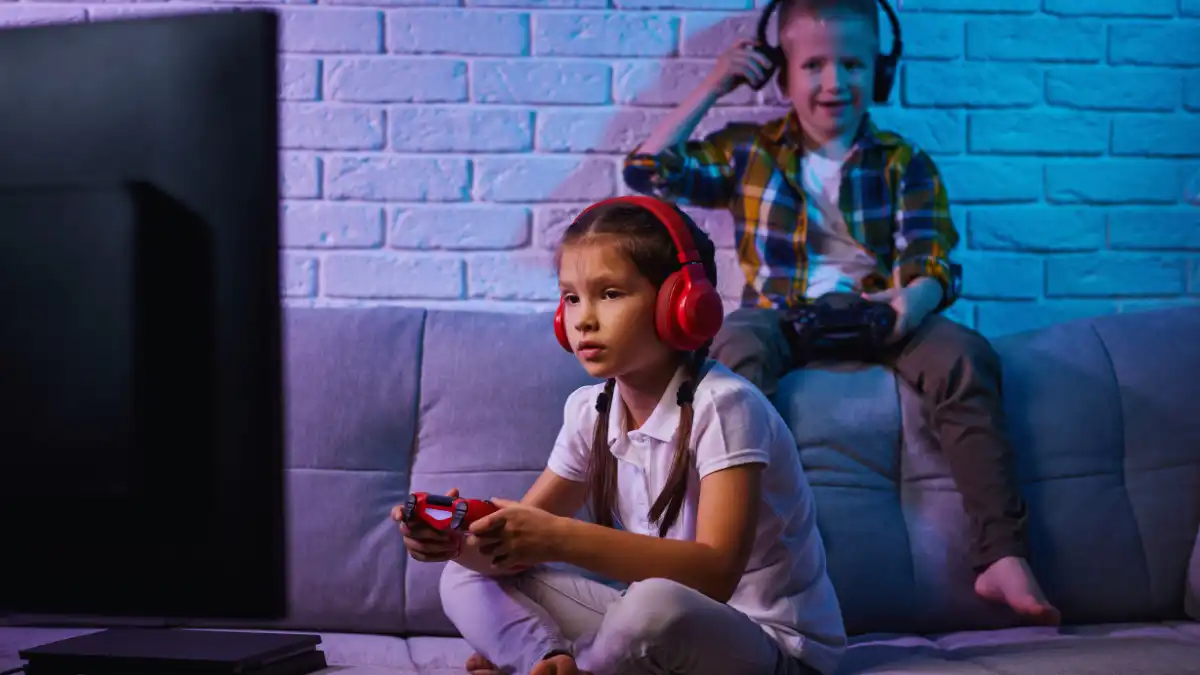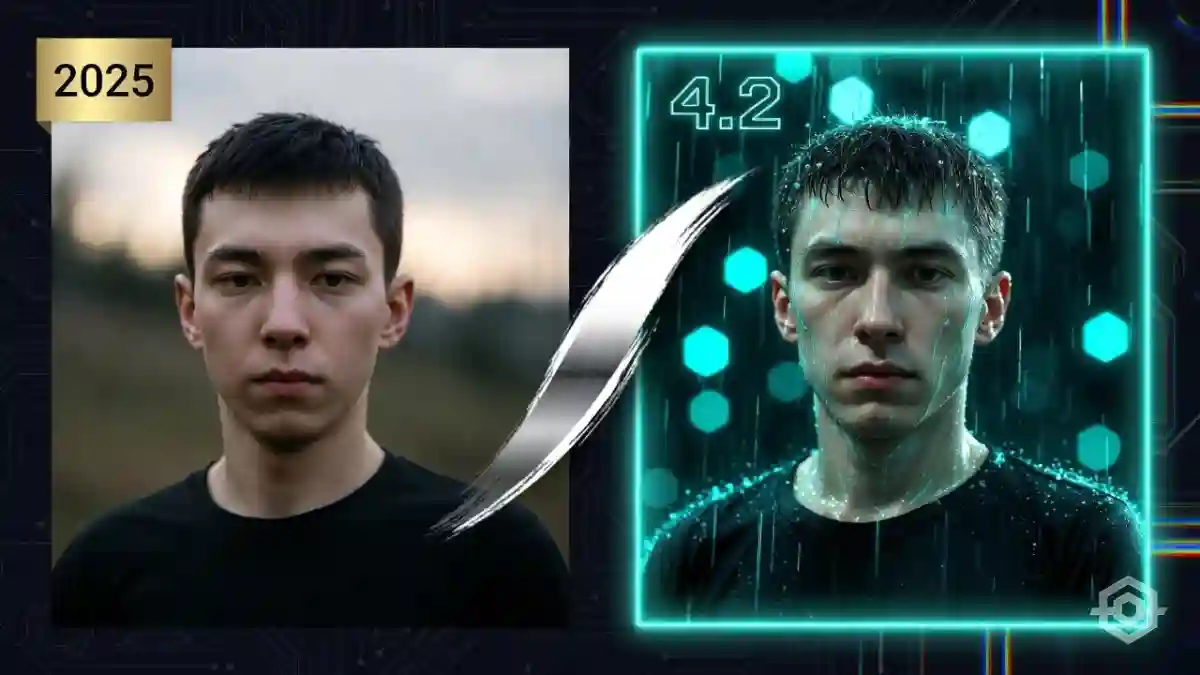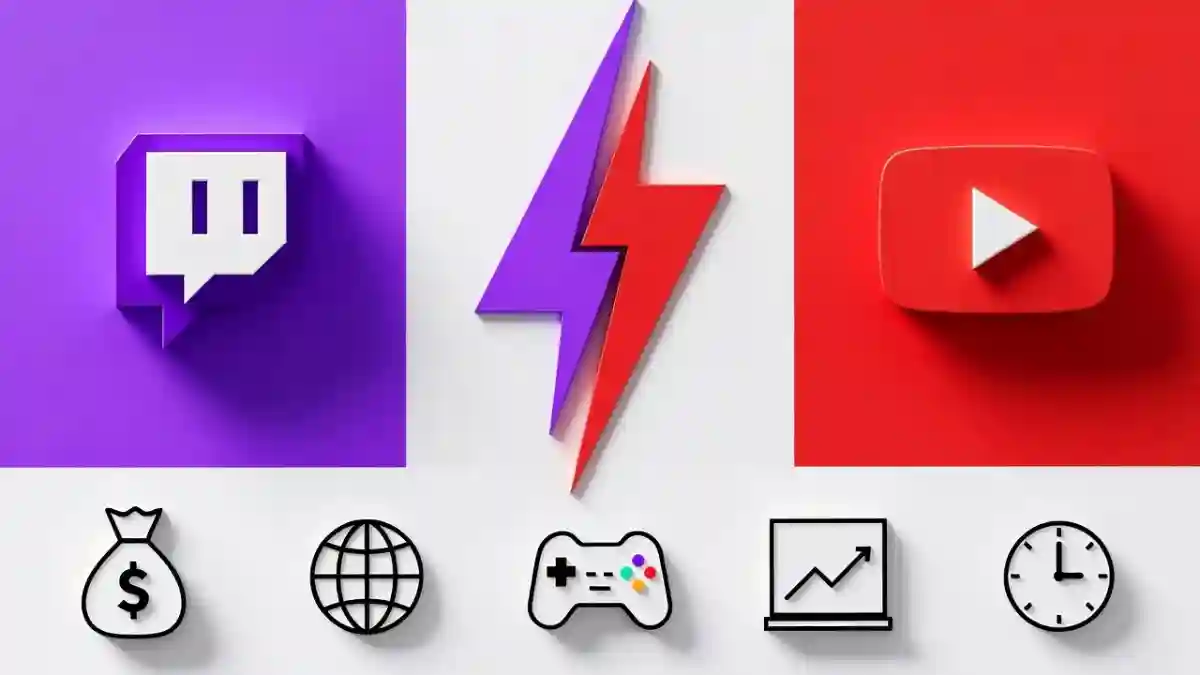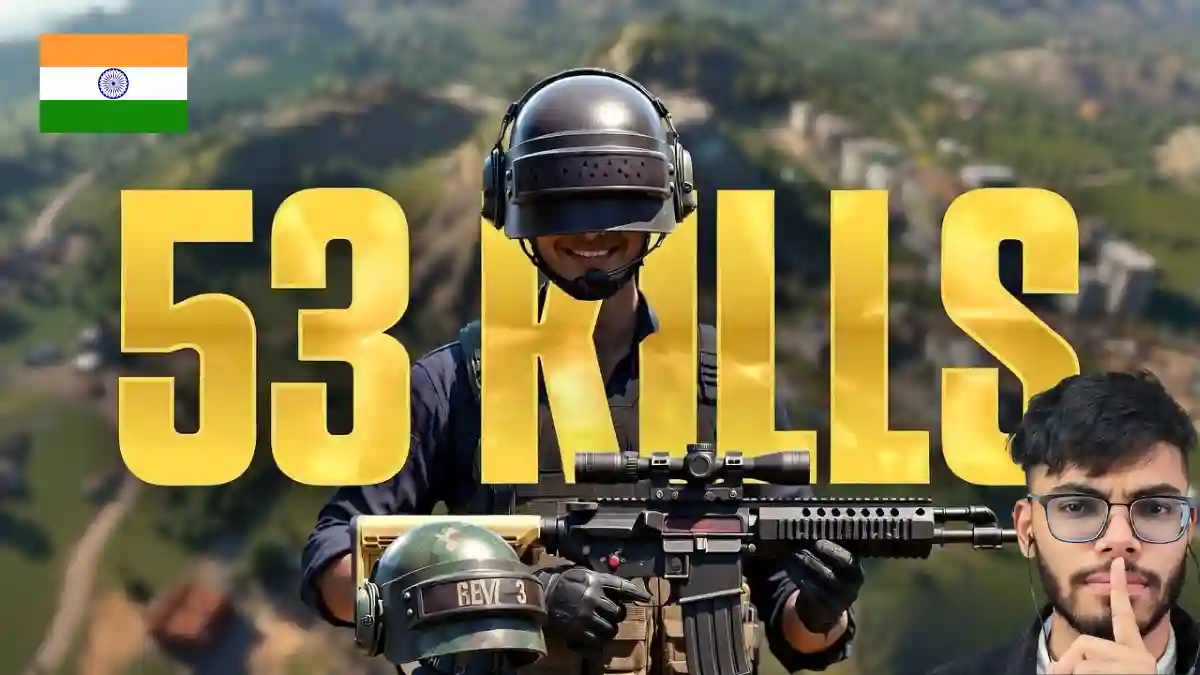Ever peek over your kid’s shoulder at their game and wonder if it’s okay for them? You’re not alone. Good news: 84% of gaming parents already use a built-in tool to figure that out. It’s called the ESRB rating system.
Those little symbols on the box? They’re your best friend. But the real details are in the content descriptors. That’s where you learn about “animated blood” or “comic mischief.”
And get this a whopping 65% of games released last year were rated for Everyone. So there’s a ton of great stuff out there. The trick is matching the game to your kid. And your family’s vibe.
It’s less about banning games and more about choosing the right ones. We’ll break down how the ratings work, what those tiny descriptors really mean, and where to find the best resources. Because honestly? It’s not always obvious.
Why Video Game Ratings Matter for Parents
Think of game ratings as your quick, at-a-glance content filter. They’re there to flag the big stuff like intense violence, strong language, or mature themes. It’s all about helping you make a smart call before you buy.
And it works. 78% of parents actually use these ratings when picking out a game. That’s not a minor trend; it’s a majority.
RELATED POST- How to Make Money Playing Video Games in 2026 (10 Idea)
But here’s the best part. For 82% of families, gaming isn’t a solo activity according to theesa. They’re playing together. So that rating on the box? It’s less about just saying “no” and more about starting a conversation. It becomes a tool for deciding what you’re comfortable with as a family. Pretty useful. Check out what parents are actually doing. The numbers tell the story.
| Statistic | Value | Source |
|---|---|---|
| Parents aware of ESRB ratings | 84% | ESRB Research |
| Parents regularly using ESRB ratings | 78% | ESA Essential Facts |
| Games rated E or E10+ in 2024 | 65% | ESRB Blog |
| Parents playing games with children | 82% | ESA Report |
But these ratings aren’t just rules to follow. They’re a roadmap for healthy development. Get this: the right game can actually boost your kid’s brainpower. We’re talking problem-solving, creativity, the good stuff.
RELATED POST- How to Become an Esports Player in 2026
What to Watch For
Each rating comes with content descriptors that point out specific triggers, which assists parents in making better evaluations. These are not exhaustive but signal elements like violence or substance use, with “Mild” prefixes denoting lower intensity.
| Descriptor | Description | Example Game Impact |
|---|---|---|
| Violence | Depictions of aggressive conflict, possibly with weapons or injury. | Intense in Grand Theft Auto V (M), contributing to its mature rating. |
| Blood and Gore | Realistic or graphic depictions of blood, mutilation, or dismemberment. | Prevalent in horror titles like Resident Evil Village (M). |
| Sexual Content | References to or depictions of sexual behavior, including nudity. | Varies from mild in The Sims 4 (T) to explicit in AO games. |
| Strong Language | Profanity or vulgar dialogue. | Common in Cyberpunk 2077 (M), affecting teen suitability. |
| Use of Drugs/Alcohol/Tobacco | Images or references to substances. | Simulated in Red Dead Redemption 2 (M). |
| Crude Humor | Vulgar or bathroom-related antics. | Featured in South Park: The Stick of Truth (M). |
Parents should cross-reference these with personal thresholds, as descriptors provide context beyond the age category.
Other Global Rating Systems
Ever see a different set of icons on an imported game? That’s probably PEGI. It’s the ESRB’s counterpart across Europe.
The idea is the same: keep kids safe. But the execution is a bit different. Instead of written descriptions, PEGI uses simple picture warnings. A fist for violence. A dice cube for gambling. It’s designed to be super visual you get the gist instantly, no reading required.
So while we get the detailed paragraphs from the ESRB, PEGI gives you the cliff notes. Different methods, same mission.
Now, for all those mobile games… that’s where IARC comes in. It’s a global system for app stores. Developers basically self-rate their game using a questionnaire, and it spits out a familiar-looking age category. It keeps things consistent across different countries.
But sometimes you want more than just a rating, right?
That’s where groups like Common Sense Media come in. They’re the critics. They go way deeper, reviewing a game’s educational value, its message, and the quality of its role models. They’re the ones who’ll tell you that Minecraft is fantastic for creativity and rate it 8+. It’s a totally different, super practical layer of info.
ALSO READ- Top 5 Free Cloud Gaming Services for Party Nights with Friends
🚨 What the Rating Labels Don’t Tell You
ESRB descriptors catch guns, gore and swear words, but three big child-safety gaps never appear on the box.
- Loot Boxes & Blind Purchases
A game can be rated E for Everyone and still let an 8-year-old spend $200 on random “card packs”.- Research: 16 % of physical games with paid loot-boxes carried no ESRB warning at the point of sale [^6^].
- Fix: Look for the tiny “In-Game Purchases (Includes Random Items)” line; if it’s missing, assume the worst.
- Study link: Royal Society Open Science, 2023 [^6^]
- Chat Abuse & Unmoderated Voice
“Users Interact” sounds harmless, but it covers open voice chat, text slurs, and adult strangers.- Data: 82 % of U.S. teens encounter offensive chat at least once a month (ADL, 2022).
- Fix: Turn off chat by default (console settings below) and enable “Require PIN to unlock voice”.
- Data Harvesting & Location Tracking
Descriptors skip behavioral ads, GPS tracking, and cross-site profiling—all legal in an E-rated mobile title.- Research: 79 % of top-grossing kids’ mobile apps share device IDs with ad brokers (University of Michigan, 2021).
- Fix: Deny location permission, switch off “Allow apps to track” (iOS) / “Opt out of ads personalisation” (Android).
Bottom line: treat the label as a starting filter, not a safety guarantee.
When in doubt, fire up the game yourself for ten minutes—if you see a spinning prize wheel, hear an f-bomb in lobby chat, or get asked for your child’s birth-date, you’ll know the rating missed it.
Providing parents with practical tools improves rating systems. You can use the ESRB’s free mobile app to quickly find game ratings, and they also have a Family Gaming Guide for helpful advice.
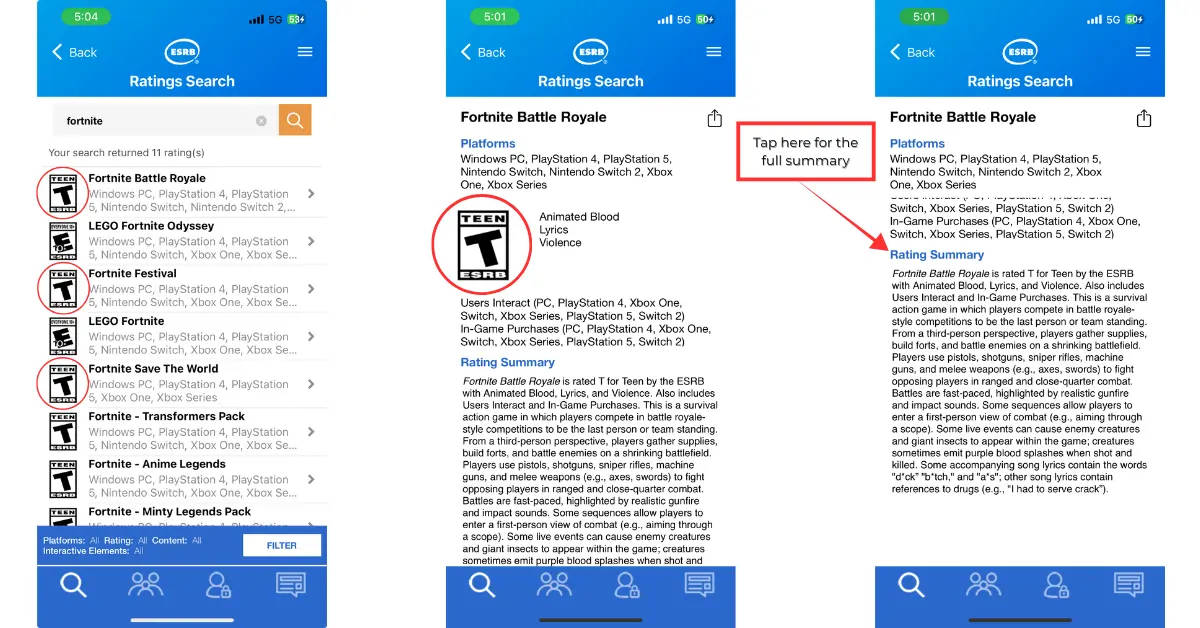
Parental Controls on Consoles
Many platforms have embedded tools for age restrictions. Go to Settings > Family and Parental Controls on PlayStation to limit games by rating, set play time, and handle purchases. Xbox uses family groups to offer similar features, like content filters and screen time tracking.
You can set profile restrictions on the Nintendo Switch, and purchase/chat limitations on mobile (iOS/Android). According to the FTC, combine these with device-level settings to oversee completely, like turning off location sharing or limiting advertisements.
How to Use Ratings Effectively in Your Family
Before you download a new game, pull up the content descriptors together. Talk about what “fantasy violence” actually means.
Real-life test: what happened when I let my 8-year-old try a T-rated game
My daughter Maya just turned eight and had finished every Kirby game on the Switch. She begged me for “something with a story,” and the store clerk recommended The Legend of Zelda: Tears of the Kingdom—rated T for “Fantasy Violence” and “Mild Suggestive Themes.” I skimmed the box, figured “fantasy” meant no blood, and said yes. Here’s the diary of the next five days.
Day 1 (Friday, 4–5 p.m.)
She spends an hour gliding around Hyrule, shrieking with joy. Zero combat. I pat myself on the back.
Day 2 (Saturday, 9–10 a.m.)
She discovers she can drop a rock on a bokoblin. The enemy crumples and vanishes in purple smoke. Maya’s eyes widen, but she laughs. I feel a twinge.
Day 3 (Sunday, 7–8 p.m.)
A cut-scene shows Zelda trapped in gloom handcuffs. Maya asks, “Why is she chained like that?” I explain it’s magic. She’s quiet the rest of the night.
Day 4 (Monday, homework night)
At 2 a.m. she wakes up crying: “The red moon is coming to get me.” We had forgotten to turn off the Blood-Moon respawn cinematic.
Red flag moment: the T rating didn’t mention “nightmare fuel.”
Day 5 (Tuesday)
We roll it back. I sit with her after school, archive the save file, and boot up Skylanders instead. We agree to retry Zelda when she’s ten. She’s relieved; I’m guilt-free.
Take-away
The descriptors were accurate but not complete for an eight-year-old’s imagination. Co-playing helped us catch the stress signals early, and the ESRB app now lives on my phone—no more “fantasy” assumptions.
It’s all about your kid’s maturity. A 14-year-old might be perfectly fine with the cartoonish action in a T-rated game like Zelda but still not ready for the intense gore of an M-rated title. Use built-in console tools for time limits and spending locks; the goal isn’t to ban play—it’s to keep gaming a stress-free part of family life.
FAQ: Common Parent Questions on Video Game Ratings
It indicates content suitable for ages 10+, with mild elements not present in E-rated games.
Mobile often uses IARC, but ESRB applies to many; always check app stores.
Highly reliable, based on expert analysis, though online elements can vary.

